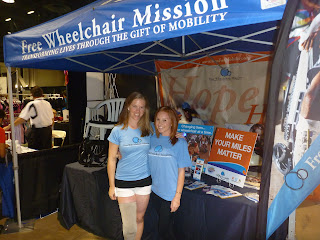Your postscript is one of the most important parts of your fundraising letter. It usually stresses the point of your letter and asks for action. Some donors read it first. Some professional writers write it first. Since the P.S. is one part of your letter that you can be confident your donors will read, you need to write something there that will motivate donors to send you a gift or take your desired action. A donor reading a P.S. is a donor looking for information. And that's your opportunity. So don't treat your postscript as an afterthought. Use these ideas for writing an effective P.S.
1. SHOW WHAT A DONATION "BUYS"
"Remember, your gift of $63.94 provides a wheelchair to someone who desperately needs it. Please give."
"Remember, your gift of $63.94 provides a wheelchair to someone who desperately needs it. Please give."
2. MENTION YOUR DEADLINE
"Only 2 weeks until the February 1st, 2012 deadline for funds! Please return any checks (made out to Free Wheelchair Mission) or cash to me so I can submit them, or simply donate online to my page at http://fwm.kintera.org/run2012/______.
"Only 2 weeks until the February 1st, 2012 deadline for funds! Please return any checks (made out to Free Wheelchair Mission) or cash to me so I can submit them, or simply donate online to my page at http://fwm.kintera.org/run2012/______.
3. DRAW ATTENTION TO AN IMPORTANT ENCLOSURE OR LINK
"I've included with this letter a brochure about Free Wheelchair Mission. Your support right now is critical to their work around the world. Many thanks."... "This 1 minute video will show you why Free Wheelchair Mission's work is so important."
"I've included with this letter a brochure about Free Wheelchair Mission. Your support right now is critical to their work around the world. Many thanks."... "This 1 minute video will show you why Free Wheelchair Mission's work is so important."
4. STRESS THE URGENCY OF YOUR APPEAL
"A hundred thousand people are in need of mobility. We’ve already lifted over 600,000 people off the ground, but that isn’t enough. We can only do more if we receive more funds. Please help by sending a gift right now."... "Our goal for the Run for Mobility 2012 is to raise $275,00 - or 4,300 wheelchairs. Can you help?"
"A hundred thousand people are in need of mobility. We’ve already lifted over 600,000 people off the ground, but that isn’t enough. We can only do more if we receive more funds. Please help by sending a gift right now."... "Our goal for the Run for Mobility 2012 is to raise $275,00 - or 4,300 wheelchairs. Can you help?"
5. ASK A QUESTION
"Do you know that as of October 2011, Free Wheelchair Mission has given away over 600,000 wheelchairs in 82 countries around the world? Please give to allow more chairs to lift more lives off of the ground and into a chair." More facts about disability around the world.
"Do you know that as of October 2011, Free Wheelchair Mission has given away over 600,000 wheelchairs in 82 countries around the world? Please give to allow more chairs to lift more lives off of the ground and into a chair." More facts about disability around the world.
6. SHARE A RECIPIENT STORY
"A young man dragged himself to and from school every day, carrying his books on his back. He neared graduation, and gave up. We asked him why – he told us “No one will hire a smart mind and a dirty body. What’s the point?” Now that he has received his wheelchair, the same young man is back in school and aspiring to be an electrical engineer. Give hope to other young people like this young man by donating today.” Check out the FWM story archive, full of powerful stories from recipients around the world.
Happy fundraising!
"A young man dragged himself to and from school every day, carrying his books on his back. He neared graduation, and gave up. We asked him why – he told us “No one will hire a smart mind and a dirty body. What’s the point?” Now that he has received his wheelchair, the same young man is back in school and aspiring to be an electrical engineer. Give hope to other young people like this young man by donating today.” Check out the FWM story archive, full of powerful stories from recipients around the world.
Happy fundraising!








